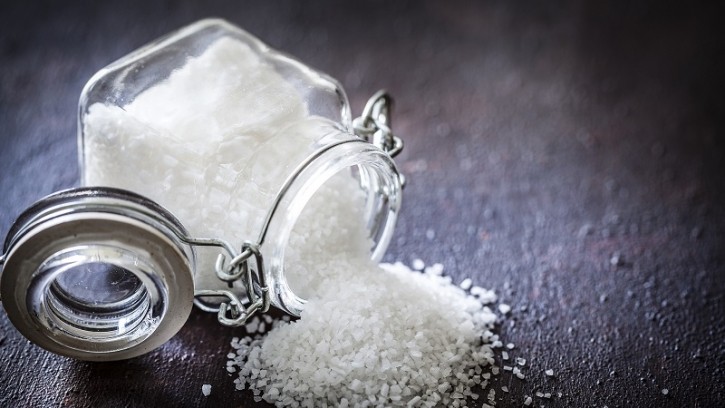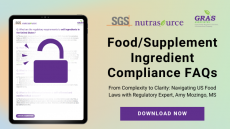Consumers split on sodium reduction importance, despite health benefits, IFIC reports

In the survey results, 46% of consumers said they are concerned about their sodium intake, and 30% are not concerned at all, with the remaining consumers having varying degrees of concern.
Additionally, 48% of consumers said they do not know how much sodium they consume daily, 20% said they consume less than 1,000 milligrams of sodium and 6% said they were consuming more than 2,300 milligrams.
Approximately a third of consumers (37%) said they are limiting their sodium in their diets or are interested in limiting sodium but have not started yet. However, 23% of consumers do not think about sodium in their diet, 11% said they do not need to limit sodium and 6% are not interested in cutting back on sodium.
The American Heart Association (AHA) recommends a limit of 2,300 milligrams of sodium a day for adults – the limit set by Dietary Guidelines for Americans – with an ideal limit of no more than 1,500 milligrams per day for most adults. A low-sodium diet can improve blood pressure and reduce the risk of heart disease, according to the AHA.
US consumers ingest on average 3,400 milligrams of sodium per day, with approximately 70% of sodium coming from packaged and prepared foods, the FDA stated.
Many CPG companies have made progress on reducing sodium in their products through stealth-health approaches and leveraging ingredients like monosodium glutamate to reduce sodium but maintain taste.
This summer, the FDA is planning to make new voluntary sodium and sugar reduction targets, after finding success with current targets.
“Some of the sodium uncertainty could stem from the way sodium is measured and recommended. Milligrams per day may not be intuitive to consumers. In addition, messages around sodium recommendations may not make it through in an actionable way,” IFIC President and CEO, Wendy Reinhardt Kapsak, said in a press release.
Sodium reduction challenge: Reducing sodium, maintaining taste
Consumers who are limiting their sodium intake largely do it to improve their health and gravitate to products with specific low-sodium claims, IFIC noted.
Most consumers (65%) who are limiting sodium intake are primarily doing it to improve health. Of the consumers who limit sodium for their health, a third do so to manage a current health condition, 31% because a healthcare provider made the suggestion, 30% are doing so to reduce water retention, and 11% are reducing sodium based on a recommendation from a friend or family member.
Nearly a third (29%) correctly identify packaged foods as the main source of sodium, 22% said it came from salt added during cooking and a separate 15% said it comes from salt added while eating.
Consumers might also be turning a corner when it comes to embracing lower sodium products. Most consumers (56%) think more positively about products that are low in sodium, compared to 32% who are neutral on the claims and 11% who did not think more positively about the products.
“Something that cannot be overlooked when we are talking about sodium reduction strategies is that the appeal of sodium lies in its ability to enhance the flavor of food. Salt makes food taste good. It augments sweetness and reduces bitterness. And we know that according to nearly two decades of data from IFIC’s Food & Health Survey, taste is the leading purchase driver for food and beverage decisions. It is hard to argue with that,” Kapsak said.


![[On-demand webinar] Healthy snacking market moves from free-from claims to holistic nutrition](/var/wrbm_gb_food_pharma/storage/images/_aliases/wrbm_medium/publications/food-beverage-nutrition/foodnavigator-usa.com/article/2024/07/15/on-demand-webinar-healthy-snacking-market-moves-from-free-from-claims-to-holistic-nutrition/17582035-3-eng-GB/On-demand-webinar-Healthy-snacking-market-moves-from-free-from-claims-to-holistic-nutrition.png)














